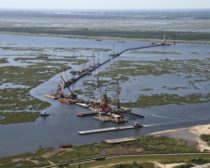Home » Keywords: » Risk
Items Tagged with 'Risk'
ARTICLES
Sponsored Content
Project Financial Control for Construction and Engineering
How well do companies manage project financial control today?
June 6, 2023
Suicide Prevention
Contractors Boost Wellness Programs to Prevent Suicide
Suffolk CEO John Fish urges OSHA to adopt suicide awareness and prevention training as a core requirement
Read More
Sponsored Content
Repeatable & Predictable Project Financial Performance – The Foundation for Success & Business Resilience
April 7, 2023
Construction Technology
nPlan Promises Better Risk Management Through AI for $11B UK Rail Project
London startup believes its technology can eventually replace QSRA
Read More
Court Stays Contractor COVID Vaccine Rule for ABC Members
Associated Builders and Contractors joined lawsuit to halt vaccine requirements for workers on federal projects
Read More
Massachusetts Hires Independent Firm to Evaluate Gas Distribution System
Texas-based Dynamic Risk Assessment Systems Inc. will spend up to 120 days examining the system
Read More
The latest news and information
#1 Source for Construction News, Data, Rankings, Analysis, and Commentary
JOIN ENR UNLIMITEDCopyright ©2024. All Rights Reserved BNP Media.
Design, CMS, Hosting & Web Development :: ePublishing














